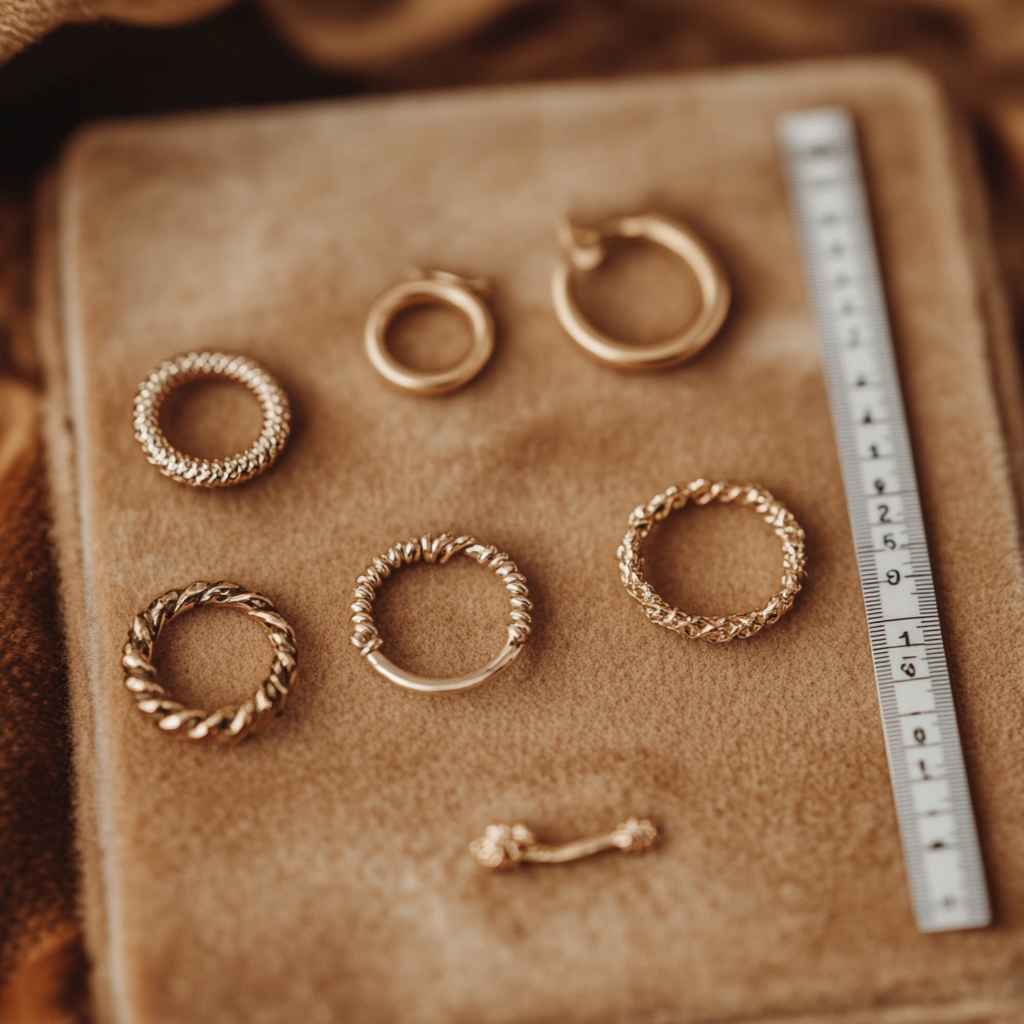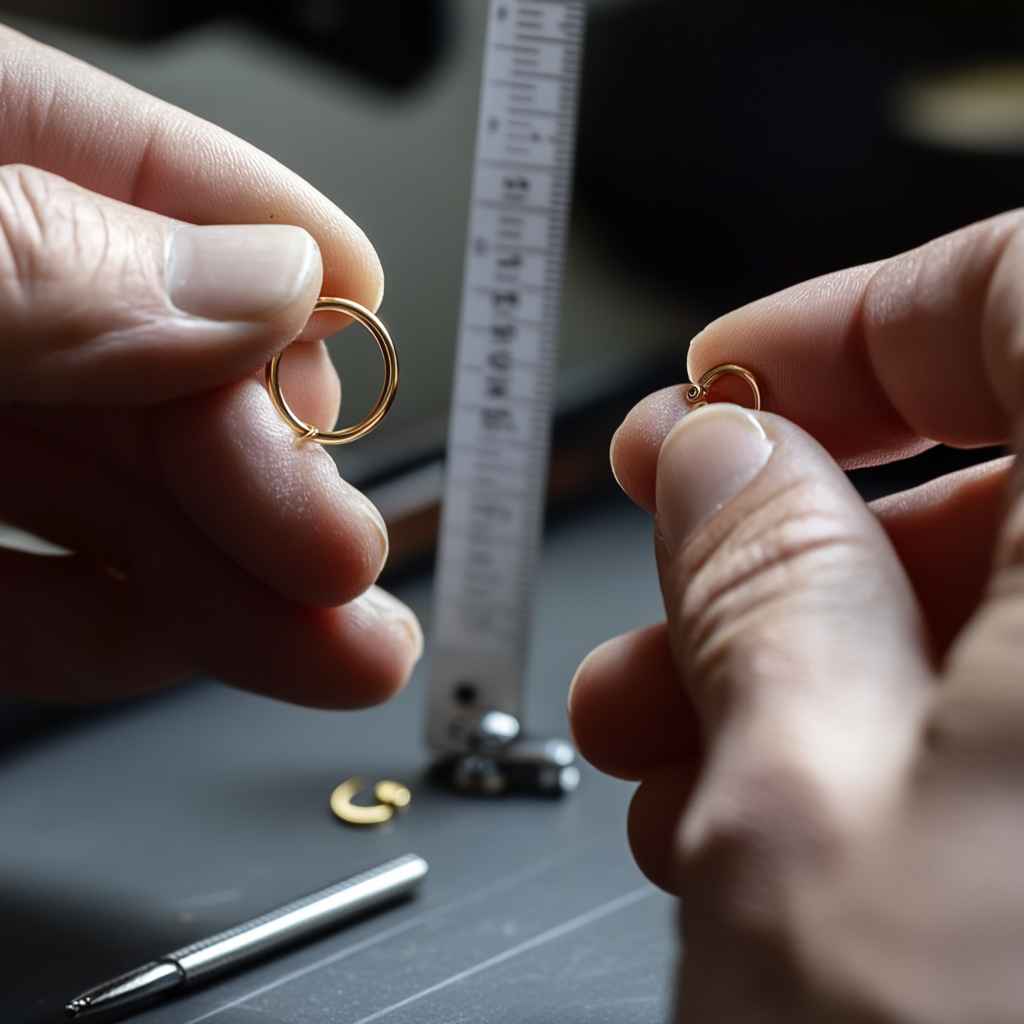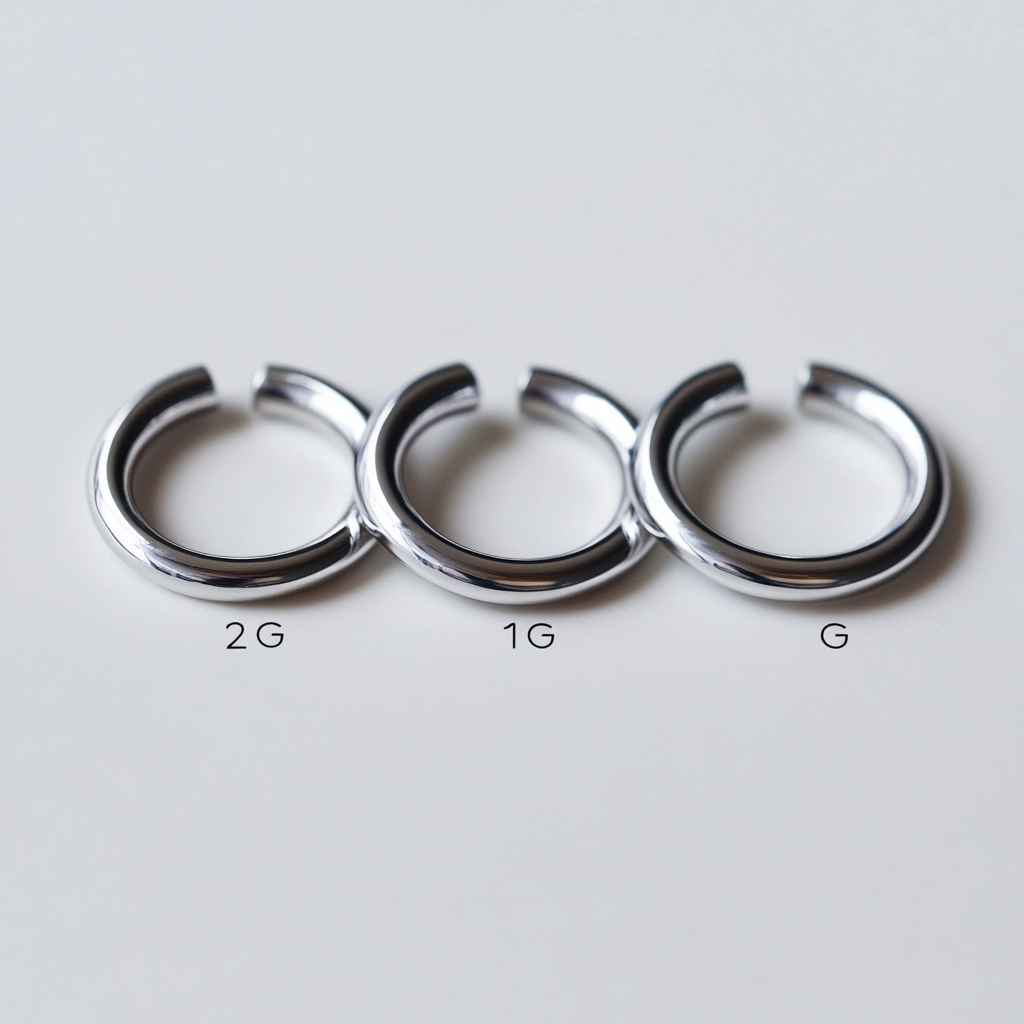Nose rings are a timeless accessory, cherished for their cultural significance and stylish appeal.
If you’re considering getting a nose piercing or buying a new nose ring, understanding the standard size is crucial for comfort, aesthetics, and proper healing.
This blog will guide you through the basics of nose ring sizes, helping you make an informed decision.

1. What Does Nose Ring Size Mean?
When discussing nose ring sizes, there are two key measurements to consider:
- Gauge: The thickness of the ring or stud, which determines the size of the piercing hole.
- Diameter (or Length): The width of the ring or the length of the stud that sits inside the piercing.
Both measurements are essential for ensuring the ring fits snugly and looks proportionate to your nose.
Read this blog to learn how to measure ring size.
2. Standard Gauge for Nose Rings
The gauge refers to the thickness of the nose ring. The most common gauges for nose piercings are:
- 20 Gauge (0.8mm): This is the standard size for most nose piercings and is commonly used for studs and hoops.
- 18 Gauge (1.0mm): Slightly thicker than 20G, this size is also popular for nose rings.
- 22 Gauge (0.6mm): A thinner option that some prefer for delicate piercings, though less common.
How to Choose the Right Gauge:
- Start with the gauge your piercer used, as the piercing size should match the jewelry.
- If your piercing has healed, you can try slightly thicker or thinner gauges for a customized look.
3. Standard Diameter for Nose Rings
For hoops and circular jewelry, the diameter is the measurement across the ring. Common diameters include:
- 8mm (5/16 inch): A versatile size that fits most nostrils comfortably.
- 10mm (3/8 inch): Suitable for those with larger nostrils or who prefer a looser fit.
- 6mm (1/4 inch): Ideal for snug-fitting hoops or smaller noses.
For studs, the length of the post is important:
- 6mm: The standard length for most nose studs.
- 7mm to 8mm: Longer posts are suitable for thicker nostrils or swelling during healing.
4. Factors Influencing Nose Ring Size
Several factors can affect the ideal size for your nose ring:
a. Piercing Location
- A high nostril piercing may require a different diameter or length compared to a standard nostril piercing.
b. Nose Shape and Size
- Individuals with larger nostrils may need larger diameters, while those with smaller nostrils can opt for snugger fits.
c. Jewelry Style
- Studs: Usually follow the standard gauge and post length.
- Hoops: Require a diameter that comfortably encircles the nostril without pinching.
- L-shaped or Screw Studs: These styles may vary slightly in length and thickness for a secure fit.
5. How to Measure Your Nose Ring Size
If you’re unsure of your size, follow these steps:
- For Gauge: Check with your piercer or use a gauge tool to measure the thickness of your existing jewelry.
- For Diameter: Use a ruler or caliper to measure the inner width of a hoop that fits comfortably.
- For Length: Measure the straight part of your stud’s post from the base to the top.
6. Tips for Choosing the Perfect Nose Ring
a. Follow Your Piercer’s Advice
Your piercer will recommend the best size based on your piercing and anatomy.
b. Start with Standard Sizes
If you’re new to nose rings, a 20G gauge and 8mm diameter are good starting points.
c. Consider Your Style
Choose sizes and styles that complement your facial features and personal preferences.
Read this blog if you want to explore how you can resize a ring.
7. Where to Buy Nose Rings in Standard Sizes
- Jewelry Stores: Offer a wide selection of standard-sized nose rings in various materials.
- Online Retailers: Platforms like Etsy or Amazon have size charts and detailed descriptions to help you choose the right fit.
- Piercing Studios: Your piercer can provide high-quality jewelry designed to fit your specific piercing.
8. Caring for Your Nose Ring
Proper care ensures your piercing stays healthy and your jewelry fits comfortably:
- Clean your nose ring regularly with saline solution or a gentle cleanser.
- Avoid switching to a new size or style until your piercing is fully healed.
- Consult your piercer if you experience discomfort, as this may indicate an incorrect size.
Here’s a Summary of Standard Nose Ring Size:
| Aspect | Details |
|---|---|
| Gauge (Thickness) | – 20G (0.8mm): Standard size for most nose piercings. – 18G (1.0mm): Slightly thicker, also popular. – 22G (0.6mm): Thinner, for delicate piercings. |
| Diameter (Hoop Width) | – 6mm (1/4 inch): Snug fit for smaller noses. – 8mm (5/16 inch): Fits most nostrils comfortably. – 10mm (3/8 inch): For larger nostrils or a looser fit. |
| Length (Stud Post) | – 6mm: Standard length for studs. – 7mm–8mm: Suitable for thicker nostrils or swelling during healing. |
| Factors Influencing Size | – Piercing Location: High nostril vs. standard nostril piercings. – Nose Shape: Larger nostrils need larger diameters. – Jewelry Style: Hoops, studs, or screws. |
| How to Measure | – Gauge: Use a gauge tool or consult your piercer. – Diameter: Measure inner width of an existing hoop. – Length: Measure the post of a stud from base to top. |
Final Thoughts
The standard nose ring size typically ranges between 20G to 18G in gauge and 6mm to 10mm in diameter, depending on the style and individual preferences.
By understanding the basics of gauge, diameter, and length, you can find the perfect fit for your piercing.
Whether you prefer a simple stud or a bold hoop, the right size ensures both comfort and style, allowing you to showcase your personality with confidence.

